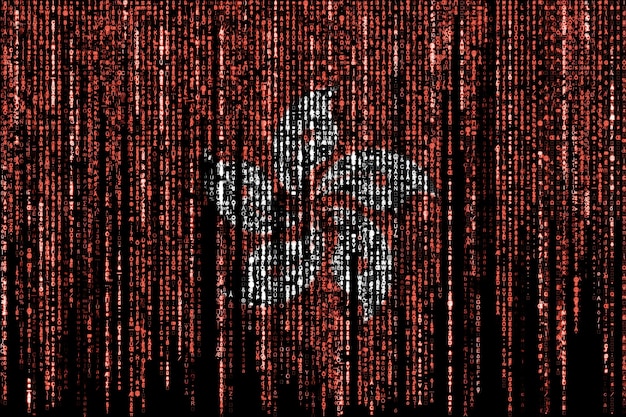Zero-Day Exploit Surge: Protecting Your Systems Now

Zero-day exploits are increasingly common and pose a significant threat because they target vulnerabilities that are unknown to the software vendor, leaving systems with no immediate patch and susceptible to attack; proactive security measures are essential to mitigate these risks.
The threat landscape is constantly evolving, and among the most dangerous challenges are zero-day exploits on the rise: how to protect your systems from immediate threats. These exploits target vulnerabilities that are unknown to the software vendor, leaving them with zero days to prepare a patch, making your systems extremely vulnerable.
Understanding Zero-Day Exploits
Zero-day exploits are named that way because the software vendor has literally zero days to fix the security vulnerabilities. This means that at the time an exploit is used, there is no patch or security update available. Understanding how these exploits work is the first line of defense for any organization or individual.
What Makes Zero-Day Exploits So Dangerous?
The danger comes from the fact that these vulnerabilities are exploited before they are publicly known. This “element of surprise” makes traditional security measures less effective.
- Limited Defense: Because vulnerabilities are unknown, standard security protocols may not detect or prevent the intrusion.
- High Value Targets: Zero-day exploits are often used in targeted attacks against high-value targets, such as government entities, large corporations, and critical infrastructure.
- Rapid Spread: If not contained quickly, these exploits can spread rapidly through networks, causing widespread damage and data loss.

The rise in zero-day exploits underscores the need for a proactive security strategy, focusing on prevention and detection rather than solely relying on reactive measures like patching.
The Rising Trend of Zero-Day Attacks
In recent years, there has been a noticeable uptick in the discovery and use of zero-day exploits. Several factors contribute to this alarming trend, including increased sophistication of cybercriminals, the growing complexity of software, and the lucrative nature of such attacks.
Factors Contributing to the Increase
Several elements have converged to create a perfect storm for zero-day exploits, making them more prevalent.
- Sophistication of Cybercriminals: Cybercriminals and nation-state actors are becoming more sophisticated in their methods, investing significant resources in finding and weaponizing zero-day vulnerabilities.
- Software Complexity: Modern software is incredibly complex, with millions of lines of code. This complexity creates numerous opportunities for vulnerabilities to hide.
- Financial Incentives: The potential financial gain from exploiting zero-day vulnerabilities is substantial, motivating threat actors to invest in these attacks.
Understanding these trends is crucial for organizations to prioritize their cybersecurity efforts and allocate resources effectively.
Common Entry Points for Zero-Day Exploits
Zero-day exploits can infiltrate systems through various entry points. It is important that individuals and network administrators learn about these entry points in order to avoid becoming victim to these exploits. These include web browsers, email systems, and common software applications.
Web Browsers
Web browsers are a common entry point due to their widespread use and complexity. Attackers often target vulnerabilities in browser engines or plugins to execute malicious code. Keeping web browsers and extensions up-to-date is important.
Email Systems
Email systems are another prevalent vector. Phishing emails can contain malicious attachments or links that, when opened, exploit zero-day vulnerabilities in email clients or operating systems.
Software Applications
Widely used software applications, such as office suites and media players, are also prime targets. Attackers can exploit vulnerabilities in these applications to gain unauthorized access to systems.

By securing these common entry points, organizations can significantly reduce their exposure to zero-day exploits.
Proactive Measures to Defend Against Zero-Day Threats
While zero-day exploits are challenging to defend against, several proactive measures can significantly reduce your risk. These measures include vulnerability assessments, intrusion detection systems, and employee training.
Vulnerability Assessments and Penetration Testing
Regular vulnerability assessments and penetration testing can help identify potential weaknesses in your systems before attackers do.
Intrusion Detection and Prevention Systems
Implementing intrusion detection and prevention systems can help detect and block suspicious activity that may indicate a zero-day exploit.
Employee Training and Awareness
Training employees to recognize phishing attempts and other social engineering tactics can prevent them from inadvertently opening the door to zero-day attacks.
Implementing these proactive measures will enhance your overall security posture and make it harder for attackers to compromise your systems.
The Importance of Patch Management
While zero-day exploits target unpatched vulnerabilities, effective patch management is crucial for addressing known vulnerabilities quickly. Rapidly deploying patches can close potential entry points before they are exploited.
Automated Patching Solutions
Automated patching solutions can streamline the process of deploying updates, ensuring that systems are quickly protected against known vulnerabilities.
Regular Patching Schedules
Establishing regular patching schedules and adhering to them diligently can minimize the window of opportunity for attackers.
While patch management focuses on known vulnerabilities, its effectiveness in minimizing the attack surface cannot be overstated. Patch management is an important part of combating zero-day exploits.
Advanced Security Technologies and Zero-Day Protection
Given the limitations of traditional security measures, advanced technologies play a critical role in defending against zero-day exploits. These technologies include sandboxing, endpoint detection and response (EDR), and artificial intelligence (AI) solutions.
Sandboxing
Sandboxing involves running suspicious files or code in an isolated environment to observe their behavior before allowing them to execute on the live system. This can help identify and block zero-day exploits.
Endpoint Detection and Response (EDR)
EDR solutions continuously monitor endpoints for suspicious activity, providing real-time threat detection and response capabilities. This enables rapid containment of zero-day exploits.
Artificial Intelligence (AI) and Machine Learning (ML)
AI and ML technologies can analyze vast amounts of data to identify anomalous patterns and behaviors that may indicate a zero-day attack, even before traditional security measures can detect it.
Adopting these advanced security technologies can improve an organization’s ability to detect and respond to zero-day threats effectively.
| Key Point | Brief Description |
|---|---|
| 🔑 Understanding Exploits | Recognizing how zero-day exploits function is crucial for defense. |
| 🛡️ Proactive Measures | Employ strategies like assessments and training to reduce risks. |
| ⚙️ Patch Management | Quickly address known vulnerabilities to prevent exploitation. |
| 🤖 Advanced Tech | Use sandboxing and AI for enhanced threat detection and response. |
Frequently Asked Questions
▼
A zero-day vulnerability is a software flaw that is unknown to the vendor and may be actively exploited by hackers. This means there’s no patch available.
▼
They are dangerous because they are used to attack vulnerabilities before a patch is available, making traditional security measures ineffective against the intrusion.
▼
Proactive measures include vulnerability assessments, intrusion detection systems, training employees to notice and recognize phishing attempts, and advanced security technologies.
▼
Patch management is vital as it addresses known vulnerabilities. Quickly patching systems can close off potential entry points and minimize the attack surface.
▼
Technologies such as sandboxing, EDR, AI, and ML can identify and respond to zero-day threats more efficiently than standard measures by immediately responding to the exploit.
Conclusion
Defending against zero-day exploits on the rise: how to protect your systems from immediate threats requires a combination of proactive security measures, advanced technologies, and continuous vigilance. By understanding these threats and implementing robust security strategies, organizations can significantly reduce their risk of being targeted by these dangerous attacks.





